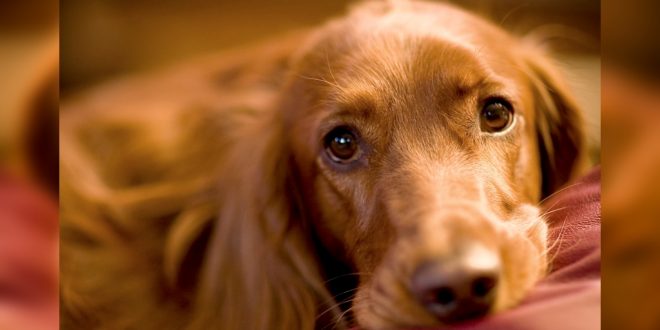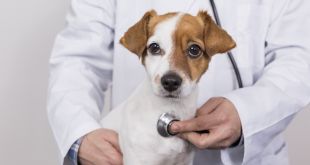“A cataract is an opacity or imperfection in the lens of the eye.”
Cataracts in dogs are a disease that clouds the lens of the eye, varying from partial to complete opacity. Cataracts must be closely monitored to prevent loss of vision and blindness.
When the eye lens is clouded, it prevents light from passing to the retina, causing loss of vision.
Causes of Cataracts in Dogs
The eye lens is comprised of specialized cells that produce fibers made of protein. Cataract forms when the cells or protein fibers get damaged. The main causes of cataract formation in dogs are:
#1. Genetics
Genetic disposition to cataracts is the most common reason dogs develop this eye condition. Both male and female dogs have an equal risk of development of cataracts. Some of the breeds that have a higher risk of formation of cataracts are:
- Afghan Hounds
- Siberian Huskies
- Labrador Retrievers
- Springer Spaniels
- Old English Sheepdogs
- Rottweilers
- Terriers
- Miniature Schnauzers
- Cocker Spaniels
- Poodles
- Bichon Frise
- German Shepherds
- Golden Retrievers
Though these breeds have a hereditary disposition to cataracts, any breed, as well as mixed-breed dogs, can develop them.
#2. Age
Aged dogs (approx. 8 years and older) may start experiencing abnormalities in their eyes. A dog that experience cataract in old age has a risk of formation of smaller cataract that doesn’t impair vision significantly.
#3. Toxic cataracts
Ocular diseases such as intraocular inflammation (uveitis) or retinal degeneration cause a toxic reaction in the lens, resulting in the formation of cataracts.
#4. Exposure to UV rays
Exposure to UV rays can contribute to cataracts, pannus, and other eye issues in dogs. Some dog breeds such as Pugs and Shepherds have a high risk of eye problems due to exposure to ultraviolet rays. You can use sunglasses to help protect their eyes and make their vision clearer.
#5. Diabetes
Dogs with diabetes develop cataracts soon after becoming diabetic. High blood sugar levels alter the metabolism of the cells in the lens. The cataract grows aggressively in many cases and requires swift medical attention.
#6. Lens trauma
A direct blow to the eye can rupture your dog’s lens capsules, resulting in the formation of cataracts and severe uveitis. Many dog owners don’t realize that lens capsules have been ruptured until they observe the intraocular inflammation in their dogs’ eyes. This inflammation doesn’t manifest until weeks after the initial injury.
#7. Nutritional deficiencies
Deficiency of nutrients can result in the formation of cataracts in puppies and dogs. In this case, the condition can improve with a proper diet.
No matter what’s the cause, if symptoms of cataracts begin to show, it is important to have your dog’s eyes checked out by your vet.
Symptoms of Cataract in Dogs
Your dog may be dealing with cataract issue if you observe:
- Grey/light blue/abnormal coloration in the eye
- White “cloudy” appearance in the eye
- Abnormal appearance of the eye in reflection of light
Symptoms of vision loss include:
- Bumping into furniture, doors, or any other object
- Barking at inanimate objects
- Walking with caution
- Difficulty in finding bowls or toys
- Walking with nose to the ground
- Clumsiness
- Some dogs move around less or slow down significantly
If you notice any such behavior or change in your dog’s eye, contact your veterinarian immediately. Untreated cataracts can lead to blindness, glaucoma, and other eye issues.
“Dogs that experience more than 60% opacity may show sign of vision loss or difficulty in navigating dimly lit areas.”
Stages of Cataract in Dogs
A small cataract doesn’t affect dog vision at all, whereas a severe cataract can blur your dog’s vision. If left untreated, cataracts can damage your dog’s internal eye structures, causing the entire lens to become cloudy and total vision loss. The various stages of cataracts in dogs are:
- Incipient cataracts – It’s the first stage of cataract in dogs. If caught early and treated well by a vet ophthalmologist can lead to a good outcome for your dog.
- Immature cataracts – Immature or juvenile cataracts are riskier and cause blurry vision in dogs.
- Mature cataracts – The entire eye lens of a dog gets cloudy and all functional vision is lost.
- Hypermature cataracts – Some mature cataracts transform into hyper mature cataracts. They vary in cloudiness. Some cataracts are completely cloudy whereas others allow some vision if the rest of the eye is healthy. Depending on the dog’s age and breed, it can take several months and even up to several years for a mature cataract to transform into a hypermature cataract.
- Senile cataracts – It’s dependent on the dog’s age (above 6 years usually); and therefore, is a late-onset cataract in dogs.
“If cataract is left untreated, it can prevent fluids from flowing into the eye, causing Glaucoma that will inevitably cause total blindness.”
Treatment Options for Cataracts in Dogs
“Cataracts in dogs can be treated but no treatment guarantees 100% vision restore.”
Some of the most common treatment options for cataracts in dogs are:
- Surgery – Surgery is the most immediate and one of the most effective treatments for cataracts in dogs, however, it is the most expensive treatment too.
- Oral Supplements – Oral supplements are quite cost-effective. They act as antioxidants to reduce inflammation in the eyes caused by cataracts in dogs.
- Eye Drops – Eye drops are a proven viable and effective treatment option for cataracts in dogs. Consult with your vet doctor before using any eye drops for your dogs. You can also use eye drops to treat common conditions that cause cataracts in dogs.
Want to learn more about Dog health? Subscribe to our newsletter!

 DogExpress
DogExpress



















 in Chandigarh, India.
in Chandigarh, India. 
